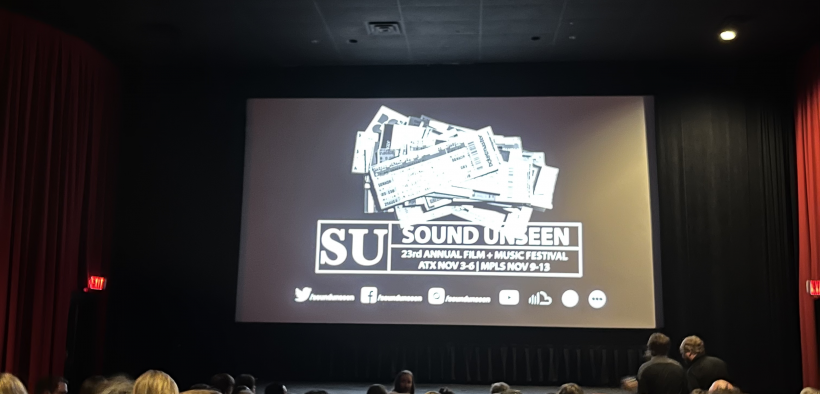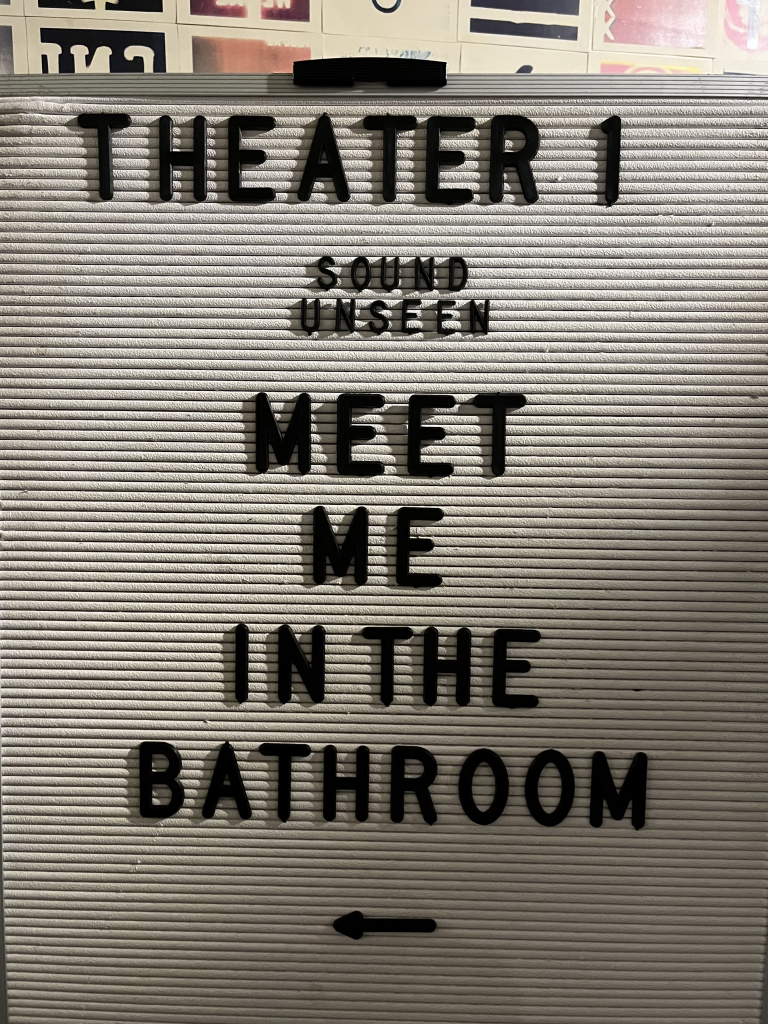Meet Me In The Bathroom: NY’s Forgotten Indie Scene
Share

“It’s a full house,” I told my partner Andrew, as we pulled into the parking lot for the Austin Film Society. The turnout was surprising; I was skeptical as to whether anyone would care enough to show up for the film. The movie we were there to see, Meet Me in the Bathroom, is a wistful documentary chronicling the creation and dissipation of the indie rock scene in New York. Most of the bands featured in the film peaked in 2003. Yet here we were in 2022, and people still cared enough about the music to buy every last seat in the theater.
As we walked through the doors of the theater, I realized that I was the youngest person in the cinema. I found myself amidst a mob of thirty and forty-something-year-olds careening around each other to purchase popcorn and beer at the single concessions counter and file into the screening room. I’ve grown used to the feeling of being the young one. My favorite bands are from the 1990s and 2000s, the music my parents listened to before I ever came into this world. In fact, my dad was the person who got me into a lot of my favorite music. Thus, at many concerts I attend, I’m surrounded by people my parents’ age who are hungry for a nostalgic slice of their youth. The showing for Meet Me in the Bathroom was clearly a case of this.
The film begins with low-quality video clips taken out of the window of a moving car as it passes over the Williamsburg Bridge into Manhattan. A conversation between Julian Casablancas (lead singer of The Strokes) and Karen O (lead singer of the Yeah Yeah Yeahs) suddenly cuts into the audio. Julian’s disembodied voice asks Karen if she likes the movie Dirty Dancing; her answer foreshadows the rest of the film’s plotline. She says: “Being a young girl who was not the pretty, popular girl… you stumble into this underbelly of cool” into a world where you can reinvent yourself. These words mirror Karen O’s awakening after being launched headlong into the NY indie garage rock scene in the 2000s.

The documentarian then introduces viewers to The Strokes with a shot of them: five smiley, charismatic boys, each with mops of dark, floppy hair, huddle together in a Brooklyn bar cracking jokes. Then a compilation of interview footage rolls across the screen. The film cuts to: singer Julian and guitarist Albert Hammond looking embarrassed as they are praised for being the potential “saviors of rock ‘n roll.” It is worth noting here that alongside all of the fame and acclaim The Strokes received, press outlets took turns dispersing rumors about Julian Casablancas’ fame being a result of nepotism and Albert’s heroin habits. In one particular interview: Albert Hammond claimed that he did everything he could to be fired from the band– including showing up high to rehearsals. He wanted to write lyrics for The Strokes’ songs but his efforts were spurned by Julian, who was the sole songwriter for The Strokes’ first two albums.
Meanwhile in Manhattan, James Murphy reflected on his early days producing music in New York before he started the band LCD Soundsystem. In the early 2000s, he was making ends meet as a DJ and record producer on the fringes of NY’s dance music scene. In interviews, he portrayed himself as a perfectionist loner who loved dance music but was too shy and intense to actually dance to it. Sadly, few people seemed to share Murphy’s creative vision for the rock-infused dance music he wanted to make. So he released his first single Losing My Edge on his own in 2002. Some people questioned his decision to release the song, which later became an underground hit. The song is eccentric and wordy, with lyrics like: “I was the first guy playing Daft Punk to the rock kids” sung with the cadence of talking over droning synth noises. The single was followed by a self-titled album in 2005, which led LCD Soundsystem to gain popularity. Much to Murphy’s surprise, his decision to release music led him to find a group of people who wanted to play in his band. His music led to a devout fanbase that loved the mix of dance, punk, and indie music.
The film cut to our serious, brooding young men lounging against a wall on a street in New York. Together, these men would come to be recognized as Interpol. The first scene of Interpol playing together features an emotional acoustic song– they are playing to a small audience, possibly at an open mic night. The band appears reserved and aloof, yet somehow their lethargic passion ripples through the music they play like a tidal wave. Interpol’s lead singer, Paul Banks, he seems to be slightly camera shy in interviews as he talks about how it’s hard to play New York rock scene knowing that The Strokes are already way cooler than his band will ever be. Interpol toured Europe for a few years in the late 1990s and early 2000s, attracting little attention until their 2002 album Turn on the Bright Lights. The band transformed into one of the most influential rock artists of the twenty-first century; recognition seemed to grip them out of the blue and eventually led them to fame.
The documentary ends with: a fast-forwarded compilation of clips from New York, reminiscent of the opening of the film. The final three minutes feature cam-recorded videos of bustling downtown streets, the ashy aftermath of 9/11, and blurry faces of eager fans gathered in a crowded music venue. A faceless narrator’s sentimental reading of Walt Whitman’s poem Manhattan Faces and Eyes Forever is spoken over the scenes of New York:
“Manhattan streets with their powerful throbs/ Manhattan crowds, with their turbulent musical chorus/ Manhattan faces and eyes forever for me.” The indie rock music in New York, and in the U.S. as a whole, has been on a steady decline in popularity. Bands like The Strokes haven’t ruled the charts since the early 2000s. Today, the music featured in Meet Me in the Bathroom is for the most part relics from another time. However, it has not completely lost its relevance. Millennial and Gen Z indie musicians are heavily influenced by the noisy garage rock tunes that came decades before them. While nowadays there is no city in particular that indie kids flock to for an alt-rock music scene (though L.A. deserves an honorable mention), indie rock is not in the graveyard. It is alive in the shrines of posters on the walls of college dorm rooms on each U.S. coast and the music venues in just about every major U.S. city. Millenial and Gen Z fans must carve out local indie rock scenes in our own cities to ensure the music doesn’t fade into obscurity.
